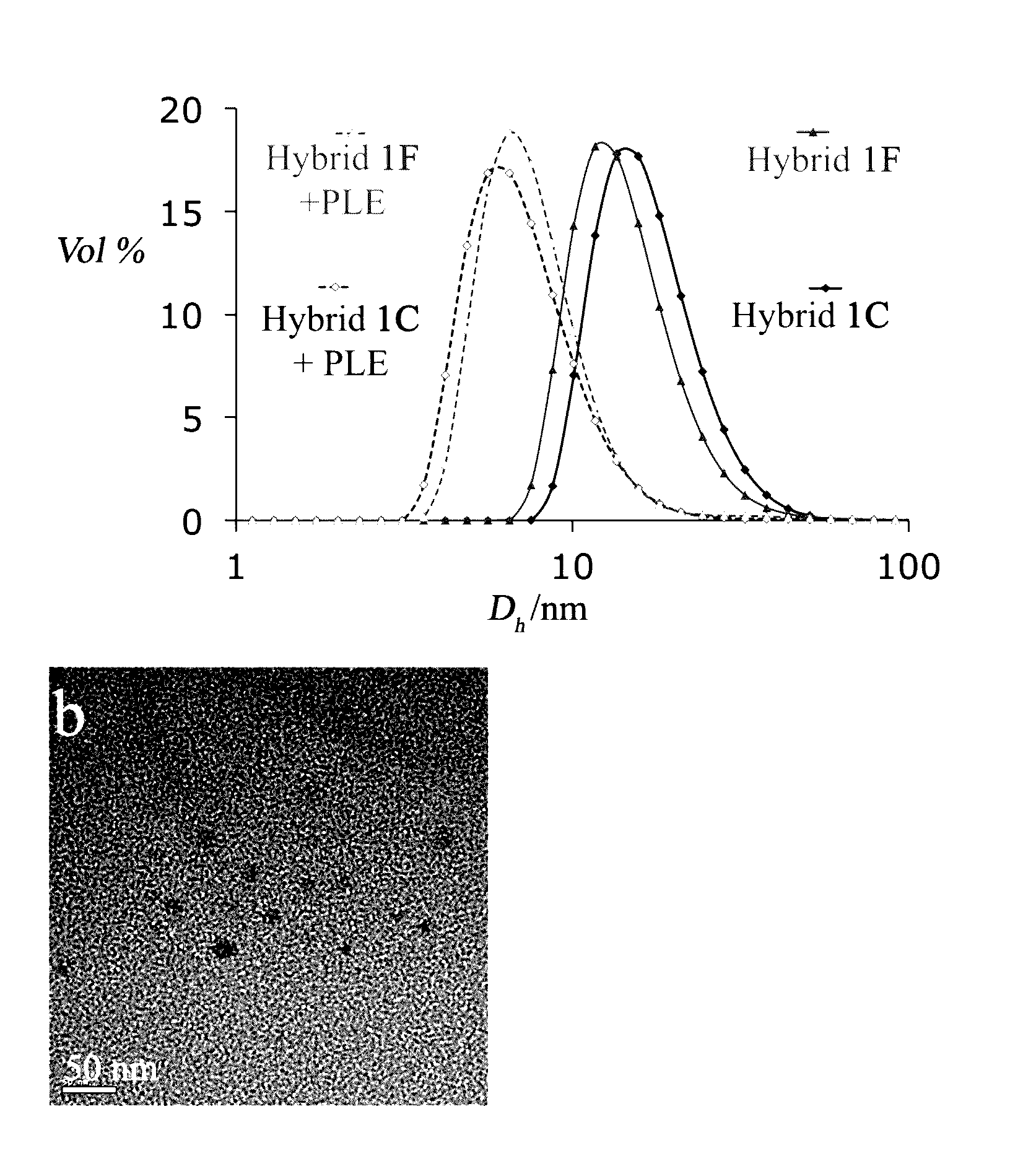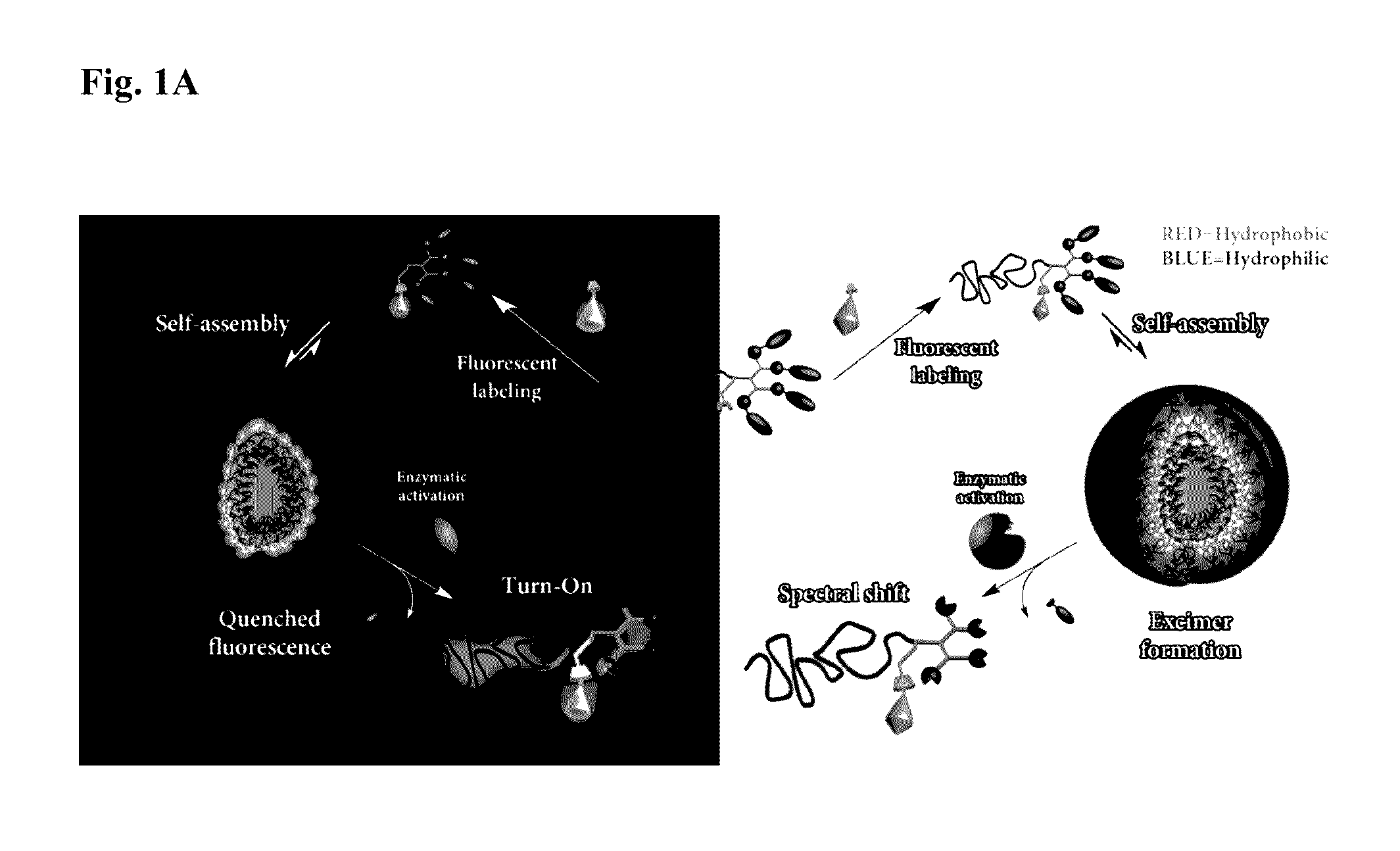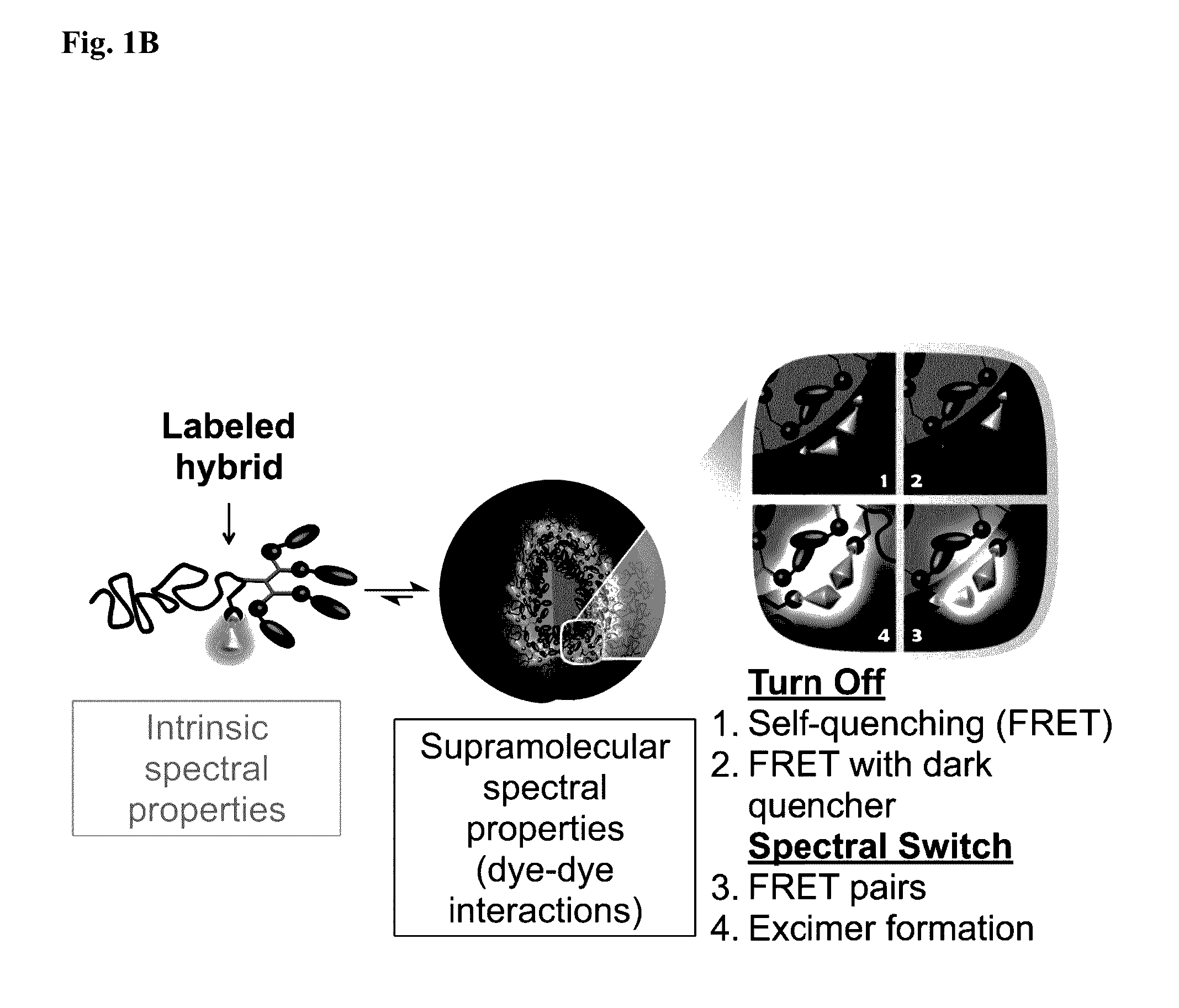Delivery system in micellar form having modular spectral response based on enzyme-responsive amphiphilic peg-dendron hybrid polymers
a delivery system and amphiphilic technology, applied in the directions of dispersion delivery, emulsion delivery, pharmaceutical non-active ingredients, etc., can solve the problem of fluorescent signal quenching at the assembled state of the micell
- Summary
- Abstract
- Description
- Claims
- Application Information
AI Technical Summary
Benefits of technology
Problems solved by technology
Method used
Image
Examples
examples 20
Example 1
Smart Micelles Containing Tunable Fluorescent Probes
[0194]The amino acid lysine with two orthogonal amine protecting groups was chosen as the tri-functional junction since selective deprotection should allow simple synthesis of the dendron from a-amine and fluorescent labeling of the 6-amine. Fluorescein (F) was chosen as the Turn-On dye, due to its small Stokes shift and known self-quenching at high loading. 7-Diethylamino-3-carboxy coumarin (C) was utilized as the spectral shift dye as coumarins can form excimers with red-shifted emission. Two esterase-responsive labeled hybrids, 1F and 1C, bearing four enzymatically cleavable hydrophobic end-groups and either fluorescein or coumarin dye, respectively, were chosen as model compounds (Scheme 1).
Characterization of the self-assembled micelles: Dynamic light scattering (DLS) measurements showed diameters of about 17 nm for both hybrids 1F and 1C (FIG. 2a). Transmission electron microscopy (TEM) images confirmed the formation...
example 2
Synthesis Protocol of the Amphiphilic PEG-Dendron Hybrids Containing Fluorescent Probes
[0201]The two hybrids, 1F and 1C, were synthesized from MeO-PEG-Lys(Boc)-Fmoc (2) as illustrated in Scheme 2. Following selective deprotection of the Fmoc group, the amine was conjugated to di-acetylene 3 to give hybrid 4. The acetylene groups were then reacted with 2-mercaptoethanol through a thiol-yne reaction to yield hybrid 5. Esterification with phenyl acetic acid yielded hybrid 6 with four enzymatically cleavable end-groups. The Boc group was removed by trifluoroacetic acid, followed by conjugation of dye to the deprotected amine to yield amphiphilic hybrids 1F and 1C. The expected hydrolysis products, hydrophilic hybrids 7F and 7C, were also synthesized as reference compounds. All polymeric hybrids were characterized by 1H-NMR, 13C-NMR, IR, and GPC (1F, 1C, 7F, and 7C were also characterized by MALDI-MS) and the experimental data was found to be in good agreement with the theoretical one.
[0...
example 3
Critical Micelle Concentration (CMC) Measurements
[0249]Instrument Method:
[0250]Excitation: 550 nm
[0251]Emission intensity scan: 580-800 nm
[0252]Diluent solution preparation: Into 10 ml Phosphate buffer solution (pH 7.4), 4.5 μL of Nile red stock solution (0.88 mg / m1 in Ethanol) were added and mixed to give a final concentration of 1.25 μM.
[0253]CMC measurement for compound 1F, 1C and 8C: A 800 μM solution was prepared in diluent and sonicated for 15 minutes. This solution was repeatedly diluted by a factor of 1.5 with diluent. 150 μL of each solution were loaded onto a 96 wells plate. The fluorescence emission intensity was scanned for each well. Maximum emission intensity was plotted vs. hybrid concentration in order to determine the CMC. All measurements were repeated 3 times. The CMC for hybrids 1F, 1C and 8C were 6±1 μM, 3±1 μM and 6±1 μM, respectively.
PUM
| Property | Measurement | Unit |
|---|---|---|
| Electric charge | aaaaa | aaaaa |
| Electric charge | aaaaa | aaaaa |
| Particle size | aaaaa | aaaaa |
Abstract
Description
Claims
Application Information
 Login to View More
Login to View More - R&D
- Intellectual Property
- Life Sciences
- Materials
- Tech Scout
- Unparalleled Data Quality
- Higher Quality Content
- 60% Fewer Hallucinations
Browse by: Latest US Patents, China's latest patents, Technical Efficacy Thesaurus, Application Domain, Technology Topic, Popular Technical Reports.
© 2025 PatSnap. All rights reserved.Legal|Privacy policy|Modern Slavery Act Transparency Statement|Sitemap|About US| Contact US: help@patsnap.com



